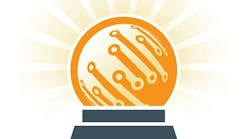The IT/OT gap is narrowing, but we still have to bridge it
Stratus Technologies Senior Director of Industry Solutions John Fryer shares
his expertise during the Smart Industry webinar “OT/IT Convergence: Securely Bridging the Gaps Between OT, IT and the Internet.” Today he previews his presentation. Take a look…
Smart Industry: What is a main challenge of getting IT and OT to work together?
John: If we set aside potential personality conflicts, the biggest challenge is getting OT and IT to understand the priorities of the other group. This enables each group to understand the thought process of the other and work toward common ground. This generally uncovers a lot of shared issues and requirements, which can serve as a starting point for cooperation. It can often be as simple as understanding that both IT and OT are stretched resources and integration will pose a common set of challenges. Whether this is an easy or difficult process often depends on the willingness of the entire organization to adapt. This starts with senior-management leadership recognizing that new skillsets will be necessary and being willing to invest in those areas. Training and upgrading skillsets are areas that companies are increasingly starting to recognize.
Smart Industry: Do enterprises over-estimate the difficulty in convergence?
John: I think most companies are scared by it, due to the range of new technologies involved. The fear is disruption to the status quo. It’s a genuine fear, but bringing together OT and IT skillsets can alleviate many of the issues. In the industrial world there has generally been the approach of incremental improvement. You see this a lot with automation, where specific areas of a production line will be automated to speed up production—the “islands of automation” syndrome that evolve in many companies. Digital transformation cannot be successfully accomplished without IT/OT convergence among the three areas that are central to success. (We’ll talk about this during the webinar.) Leadership has to make the investment to understand how these fundamental decisions can have a long-term impact on business. This does not mean “rip and replace.” With a sound fundamental plan, a stepwise approach and cooperation across the company and the right leadership, convergence can be achieved.
John: I’ve had the opportunity to attend a number of recent events focused on digital transformation and smart manufacturing/IIoT. While a lot of people are still in education mode, the exciting thing is the range of ideas that people have in how this new technology can improve their production environments. The types of applications include eliminating unplanned downtime with real-time analytics and feedback, using predictive maintenance to optimize machine uptime and production quality, maximizing production through monitoring and analyzing the performance of identical production lines (both in the same plant and geographically dispersed), using digital-twinning concepts to optimize new product production and improve existing product production. It is often the OT side of the house that leads with the ideas, but it is really refreshing to see IT professionals realize the need to understand OT operations to help make digital transformations successful.




